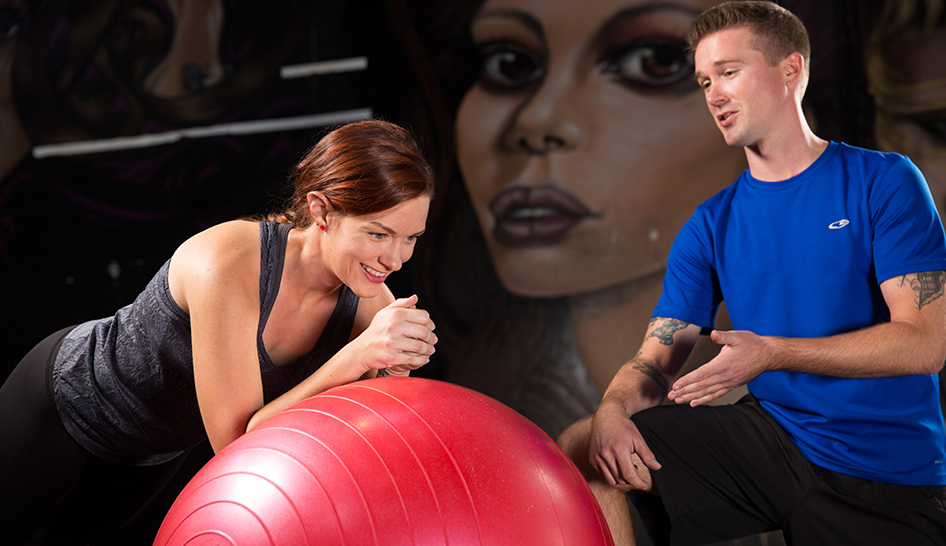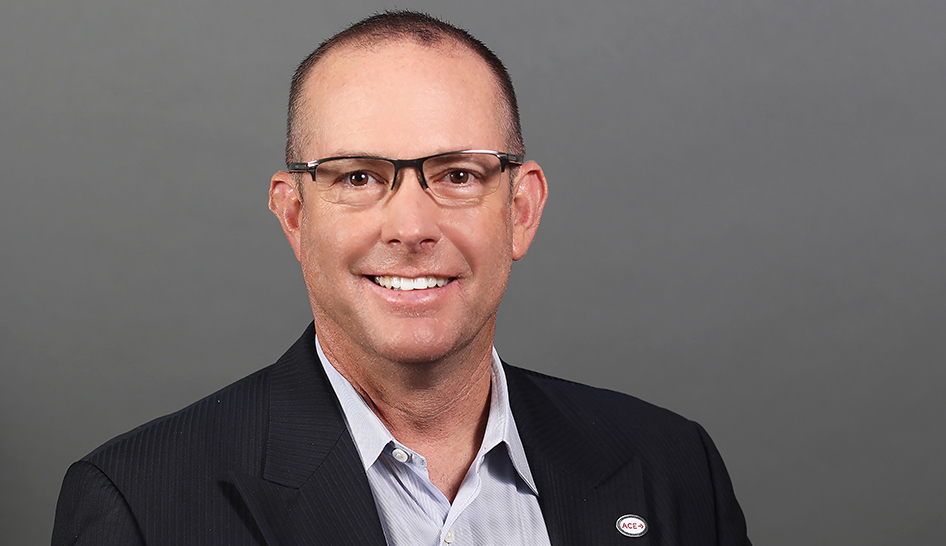The Lessons in Fitness Leadership series highlights IHRSA’s industry leaders and thanks them for their continued commitment to growing, promoting, and protecting the health club industry. By sharing their business expertise, we hope that you will get to know them, what they've learned along the way, and how they view leadership.
Be an Effective Fitness Leader by ‘Meeting People Where They Are’
For ACE's Graham Melstrand, the most fulfilling part of being a business leader in the fitness industry is creating "more meaningful relationships with the healthcare and public health communities."

Graham Melstrand
Executive Vice President-Corporate Affairs
American Council on Exercise (ACE)
What is the most fulfilling part of being a business leader in the fitness industry?
When I was in college, the physical education/athletic training department chair shared an aspirational goal with our class—for exercise professionals to contribute to the broader population’s health as a recognized and respected member of the healthcare continuum. This planted the seed in me to focus more broadly on the health benefits of physical activity, not just for fitness and sports performance.
It’s incredibly fulfilling to participate in the broader effort to professionalize the space and to create more meaningful relationships with the healthcare and public health communities. I know there’s a tremendous opportunity out there to provide exercise professionals and health coaches with rewarding career opportunities that truly impact their communities. It’s an honor to be a part of shaping the profession and to make an impact at the community level.
If you were able to go back in time, what is one piece of leadership advice you would have given your younger-self about working in the fitness industry?
When you grow up in this space, you’re already a part of the healthy minority. Regular physical activity is a given. This can make it challenging for us to empathize with people who are inactive—those impacted by obesity or who can’t afford, or don’t have access to, places or programs to engage in quality physical activity opportunities. If I could go back in time, I would have focused more heavily on making a greater effort to understand where they’re starting from so we can meet them where they are, rather than push them to think they need to do more.
In the fitness industry, we’re often too focused on what I’ve heard referred to as the couch to podium progression—it’s not enough to get off the couch and take regular walks. Instead we tend to encourage people to continually set newer, bigger goals, like running a 10k or a marathon. This is intimidating to a lot of people, and it may feel like too much for them to take on, so they stay inactive. Collectively as an industry, we need to adopt a more servant attitude that helps them meet their goals. This means creating more supportive physical activity environments within facilities and engaging the community outside the four walls of the gym—organizing walks, charity events, or adult sports leagues for members and non-members.
“If I could go back in time, I would have focused more heavily on making a greater effort to understand where they’re starting from so we can meet them where they are, rather than push them to think they need to do more.”
Graham Melstrand, Executive Vice President-Corporate Affairs
American Council on Exercise (ACE)
IHRSA does a significant amount of advocacy work to Grow, Promote, and Protect clubs across the country. How do you feel that work benefits your business or the industry at large?
It’s important for the broader fitness industry to have a voice in public policy. Both the healthcare and nutrition industries have voices representing their interests. The fitness industry is set to positively impact workplace productivity and military readiness—two key areas of interest for this administration—so it’s up to us to unite our voices and work collectively as a resource for our nation. IHRSA’s efforts to pass the PHIT Act is a great example of a positive, focused approach to positioning the fitness industry as a resource to improving health through exercise and physical activity. It’s ultimately about positioning facilities and their staff as a healthy lifestyle resource for communities.
The Personal Health Investment Today Act, or PHIT, is legislation that would make access to physical activity more affordable. How will passage of this bill help America get fit?
Within the physical activity space, there is nothing at the federal level that emphasizes and incents the adoption of active, healthy lifestyle behaviors and activities that would prevent, or reduce the impact of, many inactivity related chronic health conditions. The PHIT Act does this, by allowing Americans to use FSAs and HSAS to pay for physical activity expenses, making participation in youth sports and physical activity less expensive. This does two things:
- It reduces the financial barriers to active lifestyles, and
- It encourages healthier, more desirable behaviors in a broader sense.

What prompted you to join the Industry Leadership Council? Or what has been your most memorable experience as part of the ILC?
The most effective way to have your voice heard is to participate. The American Council on Exercise is a key stakeholder in the industry, creating experiences around physical activity both within clubs and for a larger consumer audience. We’re committed to having a seat at the table to influence the standards and best practices that advance the role of exercise professionals, get our communities moving and positively impact the industry at large.
I’m honored to be a part of the discussion about what we need to do as an industry to earn the respect and recognition of the broader healthcare community. Facilities want to employ quality individuals, and they increasingly recognize that this is an investment towards earning the recognition and respect of the referring health professional. A lot of facilities are interested in referral of patients from primary care professionals to facilities for membership. We need to expand the discussion beyond membership to facilities offering programs and healthy lifestyle interventions that are outcomes-based, scalable, affordable, and available to members and non-members if we truly want to earn broad referral from the healthcare professional. There are multiple types of physical activity programs that we as an industry could offer that would be appealing to healthcare providers that they could refer to their patients that would be both beneficial and enjoyable. And if we are able to create a positive experience for participants in those programs, they will be more likely to stay as members.

Shannon Vogler is an avid fitness consumer who uses her creative abilities to craft beautiful content for health and wellness businesses. She offers a variety of digital marketing services that aim to promote the importance of an active body and mind. When she’s not working, Shannon enjoys lifting, running, and cheering for the New England Patriots.